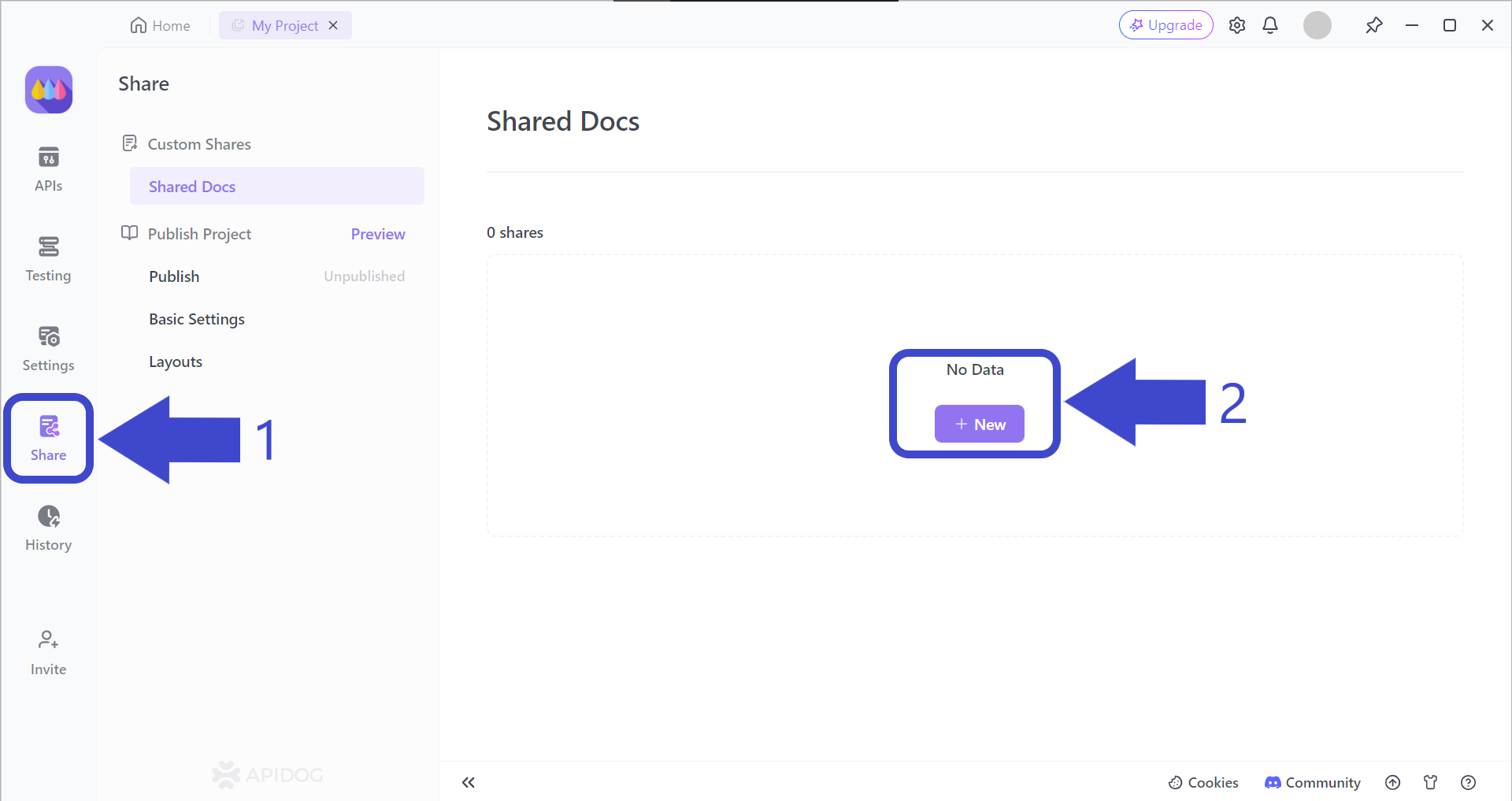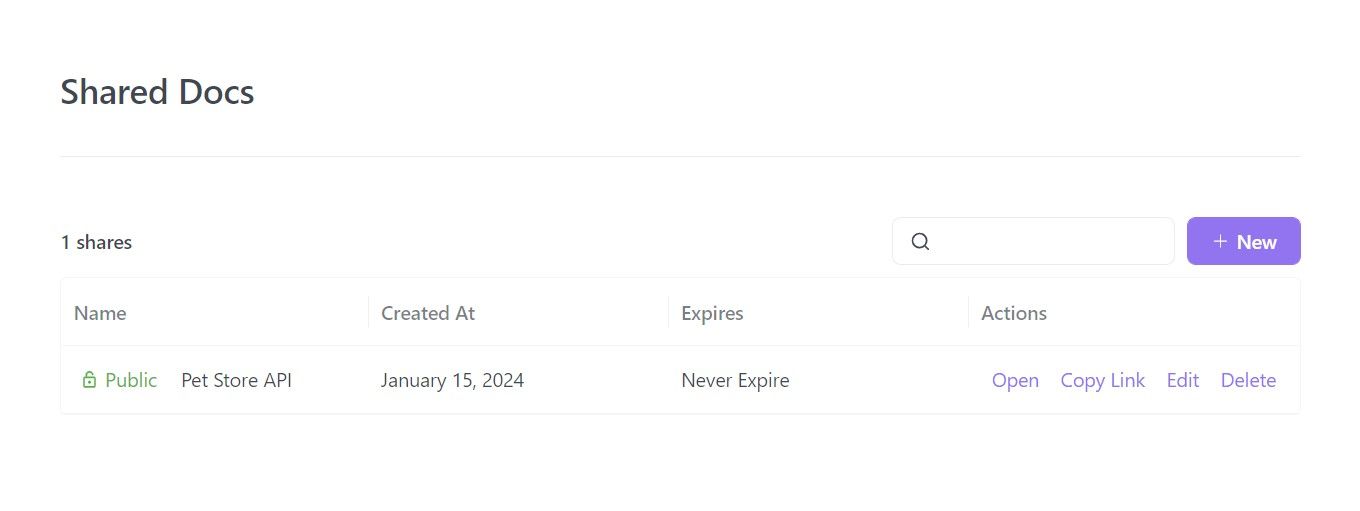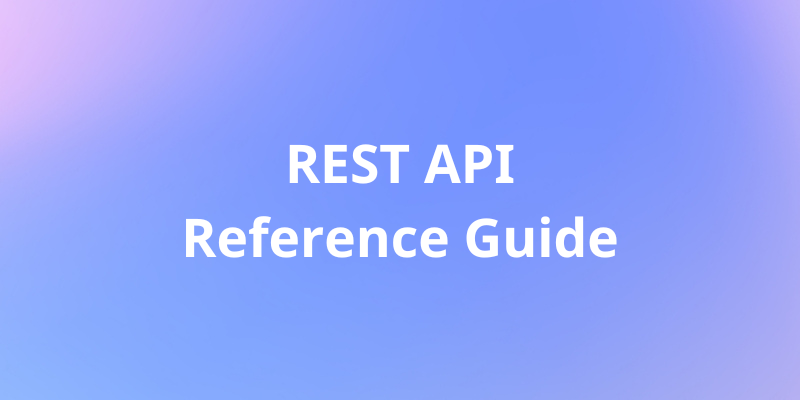REST APIs (Representational State Transfer Application Programming Interfaces) are APIs that follow the REST architectural design. They enable applications to talk to one another, allowing developers to create a limitless variety of applications. However, for developers to under how REST APIs work, they need to view the corresponding REST API reference.
All of Apidog's functionalities are free, so if you want to use them today, click the button below to begin! 👇 👇 👇

Before going further, make sure to read this small recap on what REST APIs are:
A REST API (Representational State Transfer API) functions as a standardized interface that adheres to the REST architectural style. This style dictates how applications interact and exchange data. REST APIs leverage familiar HTTP methods to perform specific actions on resources (data) stored on a server.
What is a REST API Reference?
Within the intricate web of software development, REST APIs serve as well-defined interfaces, facilitating communication and data exchange between disparate applications. REST API references are the documents or manuals that developers rely on to ensure the effective utilization of these interfaces.
You can expect a REST API's functionality and operational principle meticulously laid out in a REST API reference.
On another note, the term "REST API Reference" may be used interchangeably with "REST API Documentation". Both API references and documentation are focused on providing more information and details regarding the API at hand.
Key Elements You Can Find in REST API References
1. Functionalities:
- This section meticulously catalogs the complete repertoire of functionalities (often referred to as endpoints) exposed by the API.
- Each endpoint is typically described in detail, including its purpose, the actions it supports (e.g., GET, POST, PUT, DELETE), and the corresponding resources it manages (e.g., user data, product information).
2. Request and Response Structures:
This critical section delves into the format of data exchanged between the client application and the REST API:
Request Methods:
- Defines the specific HTTP methods employed for various actions.
- Common methods include GET (retrieve data), POST (create new data), PUT (update existing data), and DELETE (remove data).
Parameters:
- Specifies the data elements (parameters) required within the request to trigger specific functionalities.
- The reference details the expected format (e.g., string, integer) and location (e.g., URL path, request body) of each parameter.
Data Formats:
- Defines the format of data used for both requests and responses.
- Common formats include JSON (JavaScript Object Notation) and XML (Extensible Markup Language). The reference specifies the format expected by the API and the format of data returned in responses.
3. Authentication Mechanisms:
This section outlines the methods employed by the API to verify the identity of applications attempting to access its resources. Common mechanisms include:
- API Keys: Unique identifiers assigned to authorized applications.
- OAuth: An authorization framework that delegates user authentication to a third-party provider.
- Basic Authentication: A simple username and password-based approach.
4. Error Codes:
The reference provides a comprehensive list of error codes that the API might return along with their corresponding meanings. This enables developers to:
- Identify the nature of errors encountered during API interactions.
- Implement proper error-handling mechanisms within their applications to provide meaningful feedback to users.
5. Additional Considerations:
- Versioning: APIs may evolve. The reference should document the versioning scheme employed and any potential breaking changes introduced between versions.
- Examples: Including code snippets or example requests and responses can significantly enhance the clarity and usability of the reference.
- Best Practices: The reference may offer guidance on recommended practices for interacting with the API to optimize performance and security.
Real-world REST API References Examples
1. Function Compendium:
URL: https://developer.twitter.com/en/docs/twitter-api

- Example: Twitter API reference lists various endpoints, including one for searching tweets (
/search/tweets.json). It details the functionality (searching tweets based on keywords) and supported HTTP methods (GET).
If you wish to understand more about the Twitter API, check out our simple guide on how to use it!

2. Request and Response Structures:
URL: https://docs.github.com/en/rest?apiVersion=2022-11-28

- Example: GitHub API reference for creating a repository (
POST /repos). It specifies the required parameters (likenamefor repository name) and their expected format (string) within the request body (usually JSON). It also defines the response format (typically JSON) containing details of the newly created repository.
3. Authentication Mechanisms:
URL: https://docs.stripe.com/api
- Example: Stripe API reference explains how to use API keys for authentication. It provides instructions on generating API keys and including them in request headers for secure access.
4. Error Codes:
URL: https://developer.spotify.com/documentation/web-api
- Example: The Spotify API reference provides a comprehensive error code list. For example, a 401 error code indicates "Unauthorized" access, prompting developers to check their authentication credentials.
If you're interested in using the Spotify Web API, you can click on the link below!
URL: https://apidog.com/blog/spotify-web-api/

Apidog - Create the Best REST API and References!
REST APIs are a lot trickier to build due to the additional RESTful characteristics you need to adhere to. However, you can use Apidog to bypass all that hassle, and build REST APIs like any other API!

With Apidog, you can build, test, modify, debug, and document REST APIs. Yes - you can rely on Apidog for all these processes, as Apidog is equipped with all the functionalities for an entire API lifecycle!
The next sections will discuss how you can create REST APIs and their corresponding REST API references!
Configuring REST APIs Using Apidog

You can build your very own REST APIs using Apidog by filling out this section, as shown above.
Arrow 1 - You can begin by crafting a REST API URL for your request. Make sure that there are no typos so that you can receive a response! You can also determine how many parameters, and what type of parameters you would like to include.
Arrow 2 - Decide what REST API method you want. The most common methods are specifically GET, POST, PUT, and DELETE. However, note that each method may require parameters and IDs in the URL.
Arrow 3 - Explain the REST API details thoroughly by including the request parameters, response parameters, and example responses below. It is strongly recommended to have everything filled as every variable will be included in the API reference.
Creating REST API References
You can automatically generate corresponding REST API references for developers who are interested in your REST API.

Arrow 1 - First, press the Share button on the left side of the Apidog app window. You should then be able to see the Shared Docs page, which should be empty.
Arrow 2 - Press the + New button under No Data to begin creating your very first Apidog REST API reference.
Select and Include Important API Reference Properties

Apidog provides developers with the option of choosing the API reference characteristics, such as who can view your API documentation and setting a file password, so only chosen individuals or organizations can view it.
View or Share Your REST API Reference

Now that the API reference is complete, it is up to you to decide which third party you want to distribute your API reference to. Apidog does not pose any time limit or expiry on the API reference you make, so take your time!
If more details are required on how to create API references with Apidog, you can refer to this article on how to generate API documentation using Apidog.

Conclusion
A well-crafted REST API reference serves as an invaluable resource for developers seeking to leverage the power of RESTful communication. It acts as a detailed roadmap, meticulously outlining the API's functionalities, data exchange protocols, and authentication mechanisms.
By delving into the function compendium, request and response structures, error codes, and best practices, developers gain the necessary knowledge to effectively interact with the API. This empowers them to construct well-structured requests, interpret responses accurately, and troubleshoot any issues encountered during integration.
Ultimately, a comprehensive REST API reference fosters seamless application integration and unlocks the vast potential of RESTful communication - pair it together with Apidog and you have the easier REST API reference to understand!








